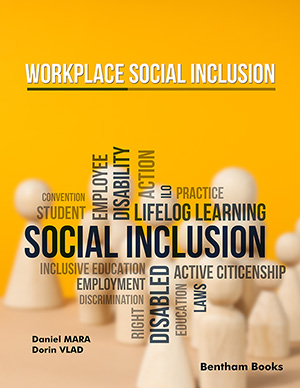Abstract
SHS investigation development is considered from the geographical and historical viewpoint. 3 stages are described. Within Stage 1 the work was carried out in the Department of the Institute of Chemical Physics in Chernogolovka where the scientific discovery had been made. At Stage 2 the interest to SHS arose in different cities and towns of the former USSR. Within Stage 3 SHS entered the international scene. Now SHS processes and products are being studied in more than 50 countries.
Abstract
Promoting social integration in the workplace for different categories of
socially disadvantaged people requires a multifaceted approach that addresses various
barriers they may face. Here are some strategies tailored to different groups:
• People with Disabilities:
Accessibility: Ensure that the workplace is physically accessible, with ramps,
elevators, and accessible restrooms. Provide assistive technologies and reasonable
accommodations to support employees with disabilities.
Inclusive Policies: Implement inclusive policies and practices that promote equal
opportunities for people with disabilities, including non-discriminatory hiring practices
and flexible work arrangements.
Education and Awareness: Offer disability awareness training for all employees to
foster understanding and promote a culture of inclusion. Encourage open
communication and dialogue about disability-related issues.
• Ethnic and Racial Minorities:
Diversity Training: Provide diversity and inclusion training to raise awareness of
unconscious biases and promote cultural sensitivity among employees.
Diverse Hiring Practices: Implement recruitment strategies that attract a diverse pool
of candidates, including outreach to minority communities and partnerships with
diversity-focused organizations.
Employee Resource Groups: Establish employee resource groups or affinity groups
where minority employees can connect, share experiences, and advocate for their needs
within the organization.
Diverse Hiring Practices: Implement recruitment strategies that attract a diverse pool
of candidates, including outreach to minority communities and partnerships with
diversity-focused organizations.
Employee Resource Groups: Establish employee resource groups or affinity groups
where minority employees can connect, share experiences, and advocate for their needs
within the organization.
• Low-Income or Socioeconomically Disadvantaged Individuals:
Living Wage: Pay a living wage that allows employees to meet their basic needs and
support themselves and their families.
Financial Education: Offer financial literacy programs and resources to help
employees manage their finances, save money, and plan for the future.
Career Development Opportunities: Provide opportunities for skills development,
training, and advancement to help employees build long-term economic stability and
upward mobility.
• Older Workers:
Age-Inclusive Practices: Implement age-inclusive hiring and promotion practices that
value the skills and experience of older workers.
Flexible Work Arrangements: Offer flexible work arrangements such as part-time
schedules, remote work options, and phased retirement programs to accommodate the
needs of older employees.
Continuing Education: Provide opportunities for ongoing learning and skill
development to help older workers stay current in their fields and adapt to changes in
the workplace.
By implementing these strategies, organizations can create a more inclusive and
equitable workplace where individuals from all backgrounds feel valued, respected,
and empowered to succeed. It is essential to involve employees in the process, listen to
their feedback and experiences, and continually evaluate and adjust strategies to ensure
they are effective in promoting social integration and diversity.
Keywords:
Disability, Flexible work arrangement, Older workers, Strategy, Workplace.
We recommend

Authors:Bentham Science Books






